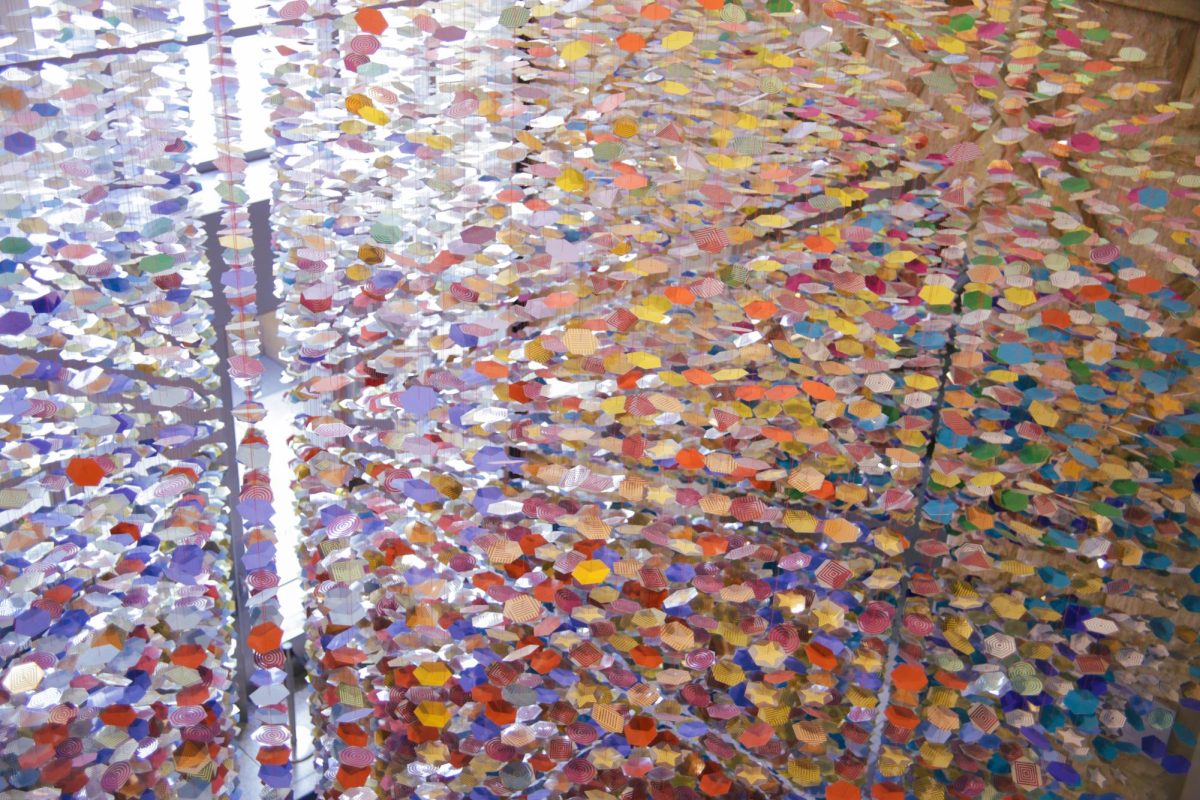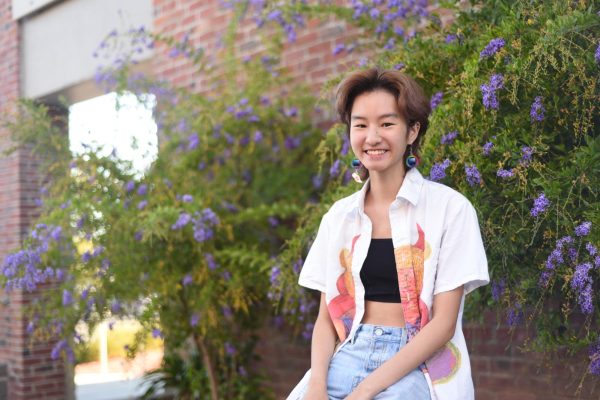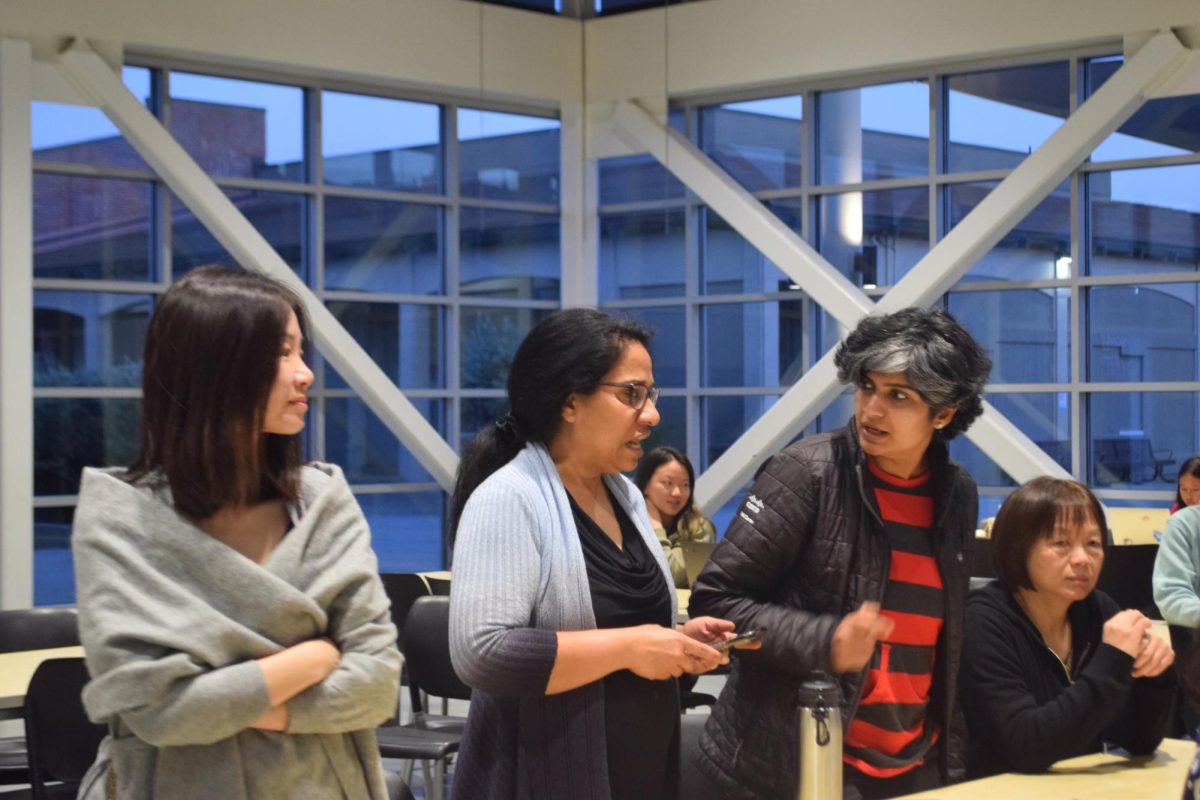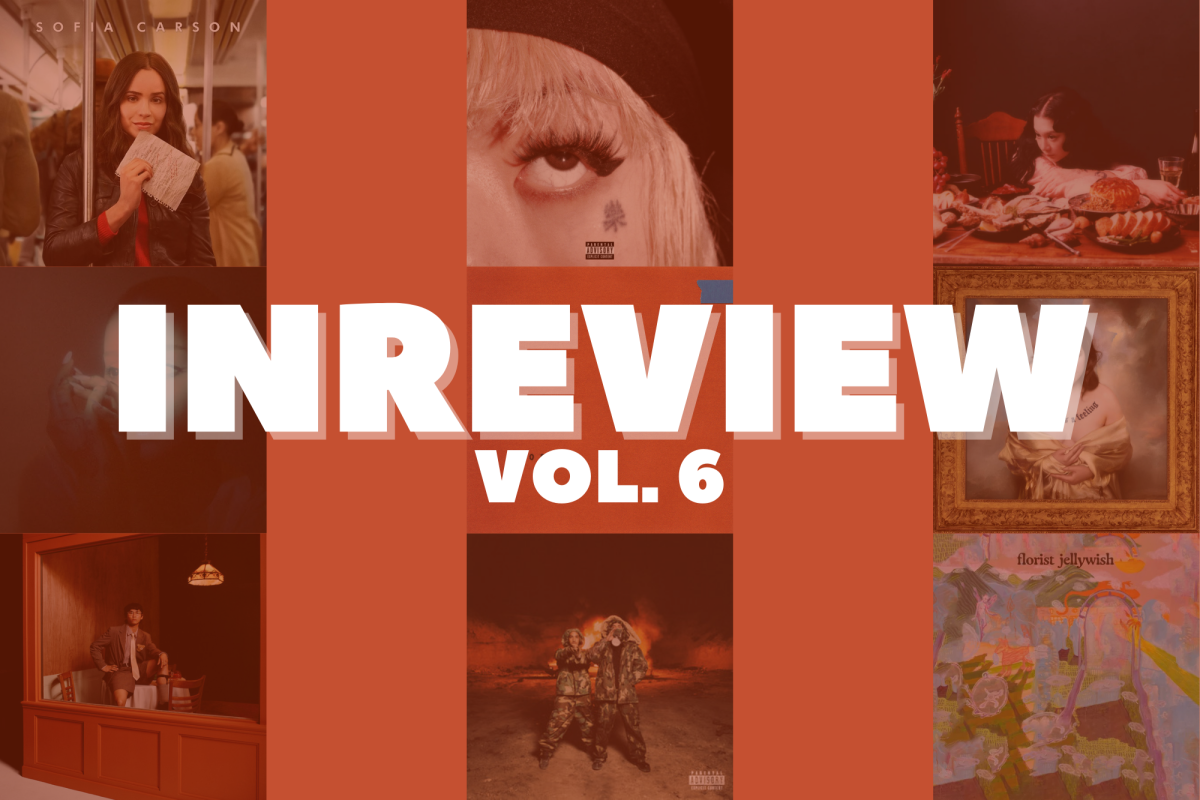The moment visitors enter the San Jose Museum of Art, their gaze is drawn upward to the 12,000 glittering metal plates, sparkling and swaying with each motion on the arrangement of hanging wires. As sunlight cuts through the cables, crisp lines formed between plates flutter and shift, welcoming visitors into the cozy museum. What they’re looking at is multimedia artist Pae White’s composition “Noisy Blushes,” which was commissioned by the museum for its 50th anniversary in 2019 and installed while it was closed for the COVID-19 pandemic.
SJMA consists of two parts — a refurbished historic wing originally set for demolition and a larger and more modern wing. Every detail of the museum emphasizes its connection to the Bay Area’s history and culture. From the plaques written in English, Spanish and Vietnamese — San Jose’s official languages — to the walls made of sandstone from the local Greystone Quarry, the museum promises an enriching experience for all visitors. The museum hosts regular free tours, beginning at “Noisy Blushes” in the atrium and guiding visitors through the ongoing exhibit “Tending and Dreaming: Stories from the Collection” and upstairs to a seasonal collection of more specialized showcases. Cupertino High School alum ‘17 and UCI student Thu-An Hanley is one of the volunteer docents who provides tours. Hanley highlights the museum’s emphasis on allowing visitors to form their connections to the art, with docents asking guiding questions instead of favoring one interpretation or the other.
“We all try to start off with the question, ‘What is going on here?’” Hanley said. “It gives visitors the opportunity to build a story around that art piece, then we can analyze why we have these thoughts and feelings. Kids, especially, can be really poignant because they’ll start with interpretations you would have never thought of — sometimes, with too much background knowledge, you get stuck in one interpretation.”
Hanley believes that one of SJMA’s most significant strengths is the interactions with the San Jose community, often hosting free events for visitors with live music or performances, like a recent áo dài fashion show to commemorate Lunar New Year. SJMA’s collections also highlight the works of Bay Area artists — for example, crocheted wire sculptures by Ruth Asawa, a San Francisco artist who is newly featured in a posthumous retrospective by the San Francisco Museum of Modern Art.
Yuri Zinger is one of SJMA’s visitors, a San Jose resident who decided to look into the museum one Sunday, during the time he set aside for weekly recreational self-care activities. Zinger appreciates the interpretable nature of the unique art on display, particularly Kelly Akashi’s sculpture “Cultivator” and Kambui Olujimi’s exhibit “North Star.”
According to his website, Olujimi’s “North Star” explores Black identity in an untethered environment, free of the relentless restriction of white supremacy. By inviting various Black artists to experience a zero-gravity simulation, Olujimi reflects on weightlessness, posing the question, “What does the Black body, devoid of the ‘inescapable’ gravity of oppression, look like?” The SJMA exhibit includes a multimedia video, interviews with participants and a liminal hall showcasing Olujimi’s watercolor paintings.
“It’s unique and ephemeral in nature because the artist came and painted across the walls,” Zinger said. “That can only be experienced here during this time, it can’t be experienced anywhere else, even if those canvases are shipped somewhere else.”
Although senior Piers Boyer visits art museums to inspire his own art process, he agrees that the grounded and personal nature of an exhibit can spark deeper thoughts. While he hasn’t had the chance to visit SJMA directly, Boyer has developed an extensive appreciation for art museums and the perspective they bring. Boyer particularly resonated with his visits to the SFMOMA and Legion of Honor in San Francisco, acknowledging the depth in a wide range of art styles and genres.
“To me, I use art museums as a means of inspiration,” Boyer said. “Oftentimes, I get in ruts of just not being able to have a creative mind, and going to these exhibits opens more possibilities, like, ‘Wow, this is a really cool aspect, I want to incorporate that into my art’ or ‘Wow, I’ve never thought about using that type of lighting technique.’ It’s incredibly interesting to learn things by observation.”
While Boyer integrates influences from art museums into his own creations as a visual development artist, Zinger believes that exposure to art can enrich the general population as well. From his perspective, no matter each individual’s interpretation, carefully considering art can bring new insights.
“I wouldn’t say I have any proclivity to making art in the mediums that we explored today, but art definitely fascinates me,” Zinger said. “The states of mind and the ideas that art is either intended to capture or inadvertently captures, that’s really what interests me. There are so many different approaches to what art means or what it’s meant to represent. So it’s like a ritual in looking at the art and whatever it invokes in you, that’s just one perspective, and there are other perspectives that it can guide viewers to seeing as well.”
Zinger emphasizes that through exposure to different schools of thought, art can deepen the angles at which individuals navigate their daily lives and values. Hanley agrees, emphasizing that museums like SJMA can give people a greater appreciation for what contemporary art means.
“When you go to these bigger establishments in large cities, people get a stricter sense of what art can be,” Hanley said. “I think museums open us up to a lot more of what’s possible with our art and our mediums, and how contemporary art isn’t just ‘red paint on canvas.’ I think that’s what people are intimidated by.”
To Zinger, SJMA is an apt example of this — not only does it bring a different perspective on art, it reflects and supplements the local community through meaningful interactions.
“One thing that art does for you is it helps expose you to different ways of looking at the world, of looking at ideas,” Zinger said. “The museum strives to curate work that represents the communities and the individuals that comprise San Jose. To get a sense of the humans in the city and what’s important to them — this museum does an amazing job at showcasing that.”











